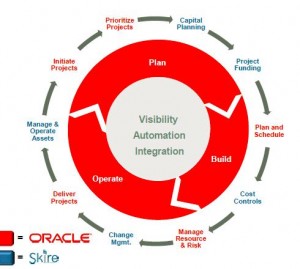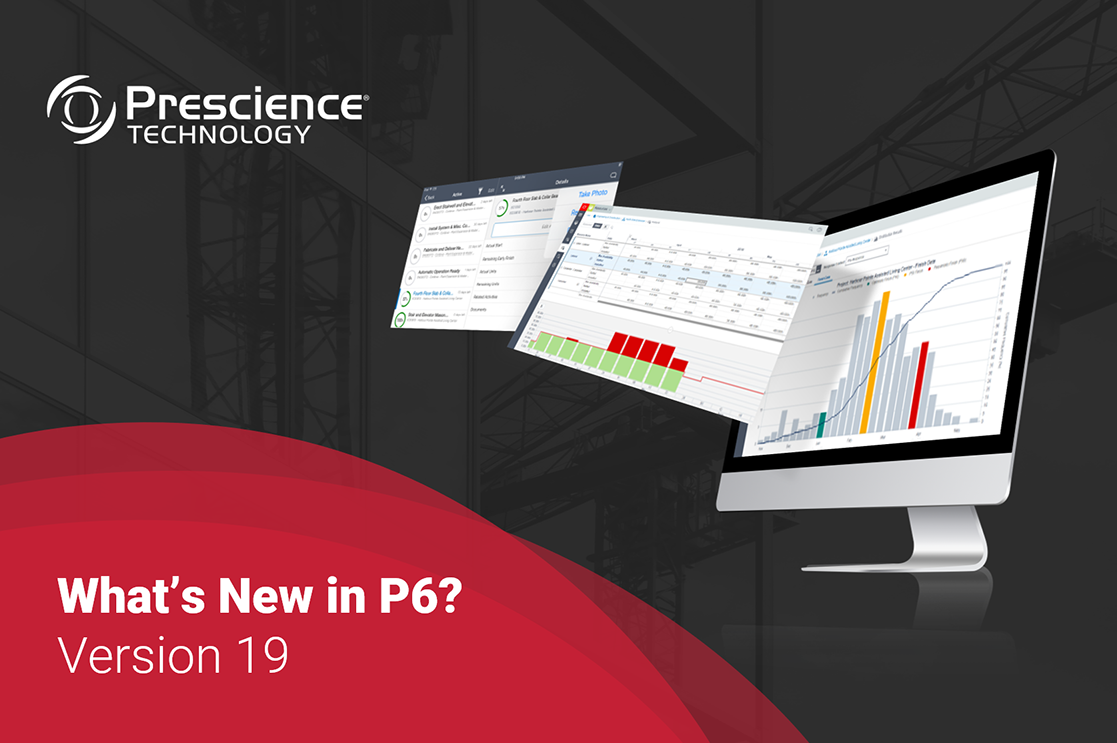Earlier this year, Oracle announced that it had acquired Skire and would be combining it with Oracle Primavera to create Primavera Unifier. In keeping with Oracle’s broader strategy, the system will be both cloud-based and available on-premise, and is set to create the most comprehensive enterprise project portfolio management platform.
As outlined at Open World in October, Oracle has quickly begun to roll out the first “product” modules of Primavera Unifier – Unifier being the new name for this blend of Oracle Primavera and the Skire product suite.
What is Primavera Unifier?
 The two products are definitely complementary, with Skire filling in some gaps in the Primavera suite and providing a new take on some elements such as contract and portfolio management (or capital planning). Conversely, Primavera P6 offers stronger and more robust scheduling capability.
The two products are definitely complementary, with Skire filling in some gaps in the Primavera suite and providing a new take on some elements such as contract and portfolio management (or capital planning). Conversely, Primavera P6 offers stronger and more robust scheduling capability.
So together, at least on paper, they will offer a truly complete project portfolio and facility lifecycle management platform – from planning (including the addition of capital planning and project funding to Primavera’s current capabilities); through the build phase (addressing Primavera P6’s weakness in cost control); and adding formal change management and asset management / operational capability.
While the Contract Manager, Risk Analysis and Portfolio Manager products will continue to be supported, it seems logical that Oracle will focus all developmental efforts on expanding the current functionality in these areas on the new Unifier platform (which we, somewhat wildly, predict will also incorporate some of the risk features of yet another acquired product, Crystal Ball). The focus will be ensuring that they integrate into the “red stack”, or Oracle technology foundation, which even the traditional Primavera products are being migrated across to.
New features of Primavera Unifier
There are certainly some new features in Unifier that go beyond the existing Primavera capabilities, however, particularly in the cost management area. The key attraction seems to be the configurability as well as the ability to customise the fields you want to see. In addition, the capability for real time updates will provide genuine real-time visibility, especially when the analytics product is added.
The other strong feature that Skire brings to the new product suite is the number of business processes that can be automated ‘out of the box’. This really is at the heart of the new Primavera Unifier.
So we were pleased to see these first three applications:
- Primavera Project Delivery
- Primavera Cost Controls
- Primavera Capital Planning
Primavera Project Delivery brings greater stage-gate control but adds the ability to track any transaction back to its source – right down to a line item in a set of meeting minutes. It also extends contract manager to support online bidding and procurement. It contains a set of interactive tools, including dashboards, for project team members to collaborate, communicate, collect documents, share reports, and track tasks.
Primavera Cost Controls is an application for managing project costs, providing integrated visibility of Budget functions, including budget approvals, transfers, and changes, as well as estimating, fund appropriations, and a cash flow graph; Purchasing functions, including blanket POs, change orders, invoices, journal entries, payment applications and payments, and work authorisations; Vendor functions, including vendor evaluations, vendor approvals, contracts, and RFBs; and Resource functions, including timesheets and a basic set of roles to which you can assign your company resources.
The big attraction of these modules, from what we can see to date, is that after you provide access and upload some key management information, the business process forms, workflows, sheet structures, and budget calculations are already designed and configured for use. This is intended to prove a significant accelerant when implementing fresh.
Finally, the Primavera Capital Planning application allows you to manage budget forecasts (both planned and in execution). It contains a Portfolio Manager, where the budget forecast planners in your company can gather cost and schedule information on projects (both planned and in execution) and perform analyses on “what if” scenarios. These scenarios are used to propose an optimal mix of projects for a portfolio, based on available budget targets and the strategic goals of the company.
Our view?
If you are looking for a highly configurable solution that is strong in cost management and business process automation and workflow, you should be considering Oracle Unifier. This is, of course, Oracle’s first, product-based release since acquisition and we are looking forward to road testing it both in our own environments as well as with some of our early adopter clients. We are also looking forward to seeing the platform mature quickly in accordance with Oracle Primavera’s published Unifier Roadmap.
If you would like to know more about any of these applications and how they could help support your project management capability, contact us via [email protected] or call 1300 086 816.




